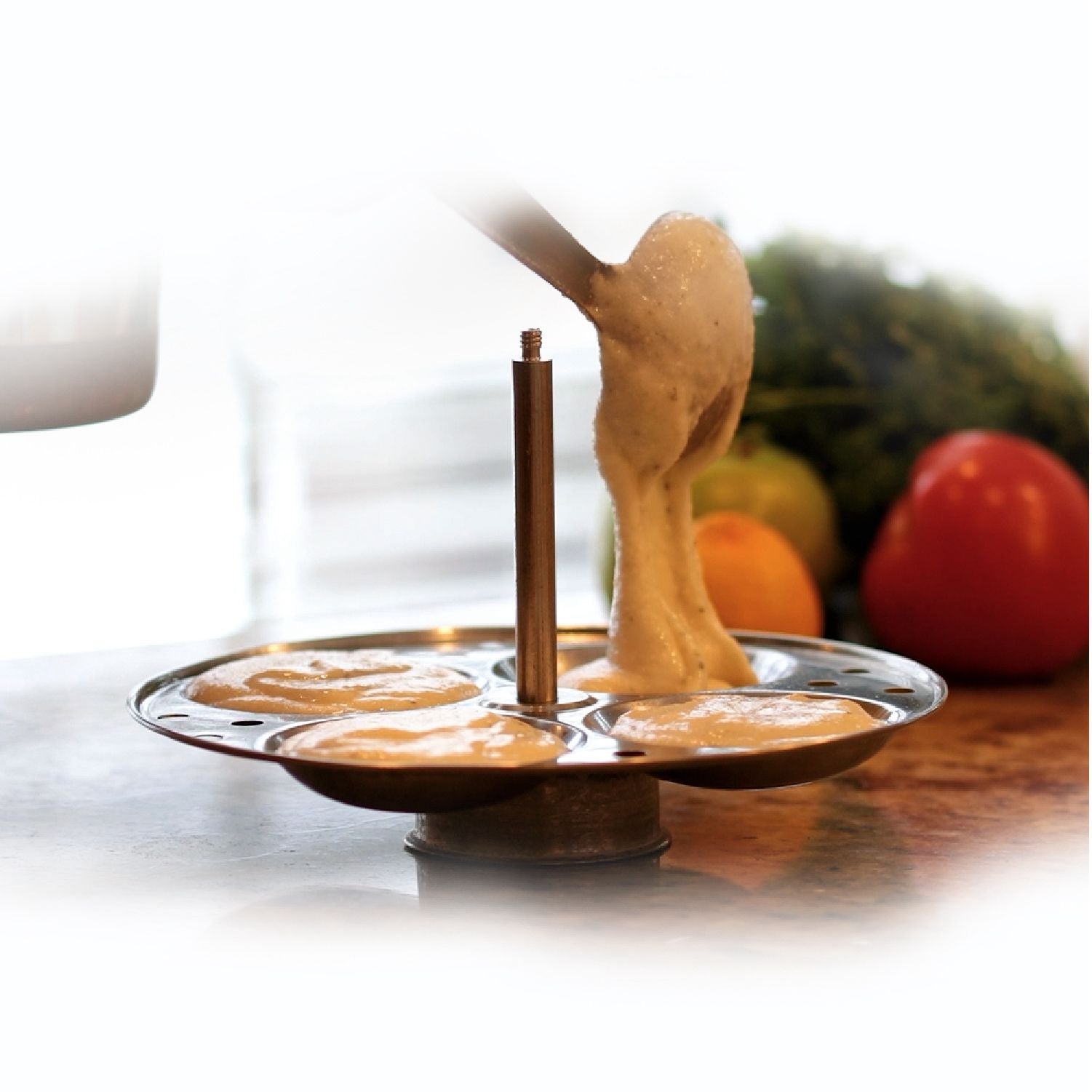Life is moving so quickly, and stress has a tendency to accumulate so easily. On this International Day of Yoga, it is worth remembering how Yoga keeps you calm, flexible, and energetic.
Nutritious food choices further increase its overall benefits. A balanced diet supports both physical energy and mental clarity throughout everyday tasks. Millets are such a good example since they are rich in fibre and nutrients that aid digestion and overall well-being. Practising Yoga along with mindful eating can bring about genuine harmony.

DIET Breakfast Combo
Millex presents you with easy-to-cook millet varieties that perfectly complement a balanced lifestyle. Products such as Multi Millet Upma Mix provide a healthy beginning to your day without sacrificing flavours. Selecting Millex is selecting food that helps you achieve your yoga aspirations and maintains your energy levels consistently through each move and every breath. Celebrate International Yoga Day by making both exercise and food work for your well-being.
The Practice of Yoga
Yoga is all about movement. It is a deep-rooted discipline that brings harmony to the body, thoughts, and inner self. Based on spiritual conviction, Yoga promotes a way of living through awareness, balance and inner harmony. Yoga teaches us that ultimate liberty or Moksha comes by way of self-realisation and conscious living. Daily practice makes the body strong, soothes the mind and promotes patience and humility.
Yoga creates room for recognising both bodily and emotional requirements. However, true results come from having this practice backed by a healthy diet. Clean, natural food provides the strength and energy the body needs to back up mindful movement. When combined, Yoga and healthy eating create a more balanced and peaceful life that feels good inside and out.
The Basics of Yoga Diet
A yoga diet is more than just meals. It's about aligning mental and physical well-being through mindful eating. Drawing from Ayurvedic principles, the diet is based on balance, purity, and energy. Foods are categorised based on how they affect the body and mind to influence selections that promote wellness and inner peace.
Three Classes of Food: Sattvic, Rajasic, and Tamasic
Everything in the natural world, as per Ayurvedic philosophy, belongs to three categories: Sattva (pure), Rajas (active), and Tamas (inert). Even food follows this categorisation:
● Sattvic Foods
These are pure and balanced. They nourish clarity, calmness, and vigour. Sattvic meals often include seasonal produce, whole cereals, pulses, nuts, seeds, clarified butter, fermented sprouts, and milk-based items. These are strongly advised for yoga practitioners as they create physical as well as mental health.
● Rajasic Foods
These activate the body and mind. Although they may be invigorating, excessive consumption can cause restlessness, irritability, or aggression. Spicy food, tea, coffee, onion, garlic, and fried foods are examples of such foods.
● Tamasic Foods
These numb the senses and induce lethargy. They can cause confusion, sluggishness, and emotional instability. Tamasic food includes processed foods, meat, stale food, reheated meals, sugary treats and alcohol.
Understanding Doshas: Vata, Pitta, and Kapha
Ayurveda also presents the theory of three doshas, which are Vata, Pitta, and Kapha. These forces, formed from the five basic elements (air, fire, water, earth, and space), govern the body's functioning.
● Vata (air + earth): Regulates movement and flexibility
● Pitta (fire + water): Manages digestion and metabolism
● Kapha (water + earth): Preserve strength and structure
Each person has a combination of these doshas, and it is this balance that is helpful in selecting foods that promote individual well-being. Following a balanced diet for yoga practitioners means choosing foods that align with your dosha. A yoga diet for your dosha can introduce more balance to your life.

Healthy Breakfast Combo
Yoga and Natural Food: A Healthy Match
Yoga balances both the body and the mind, though what you eat has a major impact as well. Millets are ideal for a yoga-friendly diet. These tiny grains are rich in fibre, iron, and plant protein. They are light on the stomach and fuel the body efficiently. Adding millet to meals supports everyday performance and promotes lasting wellness.
1. Eat Millets
Millets are gentle on the stomach, simple to absorb, and packed with essential nutrients. Including them in your meals supports healthy food habits that align with a yogic lifestyle. Millets enhance digestion, make you feel fuller longer and provide your yogic energy requirements. Rich in fibre and minerals, millets ensure a clean and balanced system. They can be consumed at breakfast, lunch or dinner and are, therefore, an easy and smart option for yogic food.
2. Eat Fresh, Natural Foods
Fresh and seasoned foods are in abundant in nature and give your system superior nourishment. Whole grains, fruits, vegetables, nuts and seeds provide steady energy and strong digestion. Stay away from processed items to reduce intake of unhealthy chemicals. Use natural ghee, raw honey, and soaked chia seeds for pure nourishment that is in harmony with your everyday yoga practice.
3. Eat at Regular Intervals
Keeping a three-hour gap between meals helps your digestion stay efficient. Sticking to this pattern helps control overeating and keeps your natural hunger signals steady. Eating on schedule improves metabolism, stabilises energy levels, and sharpens mental focus. Consistent meal timing also reduces bloating, helping your yoga sessions feel easier and more focused.
4. Make Lunch Your Heaviest Meal
Midday digestion is the strongest, so lunch should be your most filling meal. Include whole grains, vegetables, and proteins to fuel your body. Avoid heavy dinners that cause sluggishness. A nourishing lunch boosts energy, supports digestion and helps maintain your focus. This simple shift improves your routine and supports deeper rest at night.
5. Avoid Chemicals and Stimulants
Synthetic ingredients, preservatives, and stimulants such as caffeine upset the body and mind. These can cause restlessness, insomnia and upset stomach. Opting for clean, unprocessed foods maintains your system in balance. Natural foods promote clear thinking and peacefulness, the essentials of Yoga.
6. Eat Two Hours Prior To Yoga and Sleep
Consuming food close to yoga practice or bedtime can lead to heaviness and discomfort. Allow your body a minimum of two hours to digest before physical activity or rest. Opt for small, light meals that enable you to move with freedom and sleep better. Such timing aids ease and calm, and more benefit from both rest and Yoga.
7. Opt for Cooked Food for Dinner
Food cooked is easier to digest, naturally, at night. It naturally digests quicker and loosens your body to sleep better. Steamed vegetables, mildly spiced grains, or soups are perfect dinner foods. A light meal at night prevents bloating or unease, and you can sleep peacefully, waking up lighter.
Yogic Recipes for Optimal Health
A yogic diet emphasises simplicity and natural healing. These recipes are tasty, gentle on the digestive system, and full of nutrients. They support both body and mind and are perfect for anyone wishing to adopt a yoga-based lifestyle. The following are some simple recipes to leave you feeling energised, light and balanced.
1. Millet Khichdi
Millet Khichdi is a modern version of classic Ayurvedic comfort food that beautifully blends the principles of Yoga and nutrition. Swap out rice for millet to increase fibre content and add extra nourishment. Combine equal proportions of yellow moong dal and millet. Saute with ghee, turmeric, cumin, and coriander until tender. This one-pot dish supports equilibrium among all three doshas and promotes smooth digestion, making it perfect for gentle meals or times of healing.
2. Golden Milk
Famous for its healing powers, golden milk is an anti-inflammatory beverage prepared by heating millet with turmeric, black pepper, and honey. Adding spices like cinnamon or cardamom can boost both taste and health value. This soothing beverage is best taken before sleeping to aid immunity and promote great sleep.
3. Vegetable Soup
Rich in vitamins and minerals, vegetable soup sustains and fortifies the immune system. Saute onion, garlic, ginger, and mild spices in ghee. Add chopped seasonal vegetables and cook in water or broth until tender. This is a great light meal, particularly during detox or when healing is required in the body.
4. Massor Dal
This masoor dal recipe is gentle on digestion and quick to prepare. Boil masoor dal in turmeric and salt. Lightly cook cumin, coriander, and chopped onion in another pan, then mix them into the lentils. Add the tomatoes and cook them gently for a short time. It is comforting and filling.
5. Sambhar
A healthy South Indian dish prepared with toor dal and mixed veggies. Rich in both protein and dietary fibre. Season with mustard seeds, cumin, and coriander, and cook till soft. Served with rice or dosa. To make it healthier, try Millet dosa or Ragi dosa.
6. Coconut Chutney
An easy, cooling accompaniment made with grated coconut, roasted lentils, green chillies, and fresh ginger. Blend into a smooth paste. It goes well when paired with multi-millet upma.

Stay Healthy with Yoga and Millex – Clean Food for Balanced Living
Healthy living is not only about movement but about feeding as well. A consistent yoga lifestyle and eating habits bring mental focus, flexibility, and inner peace. Pairing this with mindful eating creates a lifestyle that promotes overall wellness. Making conscious food choices has the potential to make a mighty impact on how you feel, move and live your life on a daily basis.
Millex provides healthy millet-based food naturally attuned to your well-being objectives. Easy to make and packed with goodness, Millex items like Ragi Idi Instant Mix and Millet Health Drink Mix with Churnam support your yoga routine while still tasting great. On Yoga Day, make a move toward healthier living. Select Millex for nourishing meals that keep up with you each stretch, each breath, every day.






